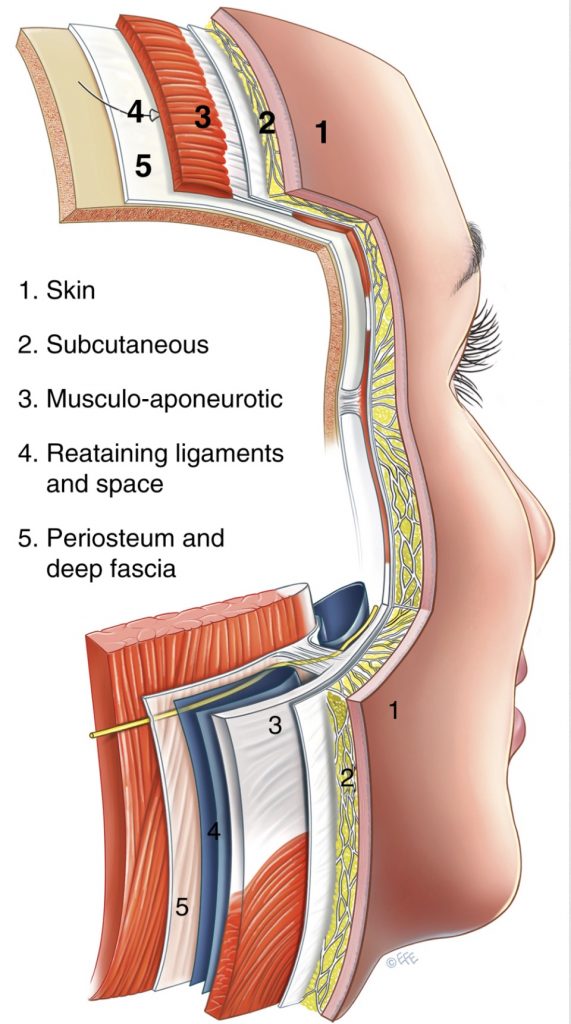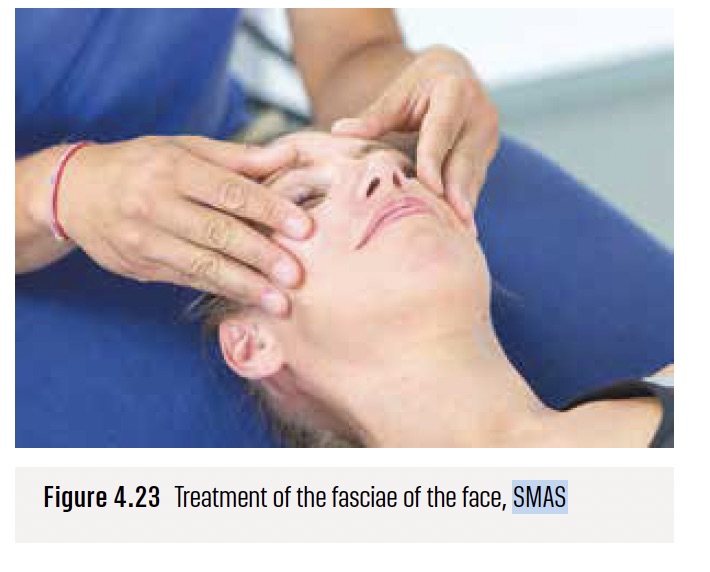SMAS of the superficial fascia of the face:
– Fibroelastic: more thin-layered toward the periphery; in youth, rich in elastic fibers which become progressively less during aging.
– It forms a fibromuscular network in the face region, since all the mimetic muscles are invested and linked via the SMAS.
– Thus the SMAS is sometimes seen in phylogenetic terms as a platysma.
– The superficial fascia acts in as a kind of central point of attachment for the mimetic muscles, acting to modulate and transmit muscle tensions and convey movements to the skin.
– In the face region, the superficial adipose tissue is generally thin and interwoven with muscle fibers of the mimetic muscles.
– The deep adipose tissue separates the SMAS from the deep fascia. Horizontally-running septa act as buffers for the deep-lying muscles. Another function is to separate the contractions of the deeply situated masticatory muscles from the superficially lying mimetic muscles.
– The depth of the deep adipose tissue varies. Especially in the cheek, it is strong and rich in fat, while in the region of the parotid gland it is absent (here, the SMAS lies directly adjacent to the deep fascia). In the region of the zygomatic arch and nasolabial groove it is very thin. Here, the buccinator and zygomaticus muscles pass through the deep adipose tissue and link the deep and superficial fascia.
– Connections:
– Caudad, with the platysma.
– Cephalad, with the epicranial aponeurosis and superficial temporoparietal fascia.
– Toward the surface, with the dermis via the vertical superficial skin ligaments situated in the superficial adipose tissue; the elasticity of these septa and of the superficial fascia reduces in aging, leading to ptosis of the skin.
– Toward deeper-lying regions, with the deep fascia of the face via the horizontal elastic deep skin ligaments in the deep adipose tissue.

Fig. 1 from: https://plasticsurgerykey.com/facial-aging-and-anatomy-of-the-facial-nerve/
Treatment of SMAS
Hand position: (Figure 4.23).
- Points of connection between superficial and deep fasciae These can be assessed and treated in the region of the zygomatic arch, parotid gland, and anterior masseter muscle (Figure 4.22).
- The SMAS of the superficial fascia of the face can be treated by mobilization of the mimetic muscles
- Ask the patient to grimace the face against the resistance of the hands. The hands are aligned with the SMAS layer.

Check Liem 2023


